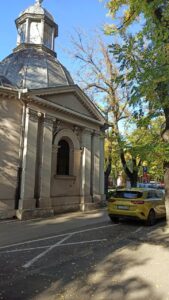City squares and parks of Subotica: history and contemporary use.
===
Subotica, a vibrant city in northern Serbia, is known for its rich history, stunning architecture, and an array of green spaces. The city’s squares and parks act as communal focal points, where history and contemporary life beautifully intertwine. This article delves into the historical significance of these spaces and how they are cherished and utilized in modern times, revealing the heart and soul of Subotica.
City Squares: A Historical Perspective
The city squares of Subotica tell a story that transcends centuries, marked by their ornate facades and proud sidewalks. The main square, Trg Slobode, represents the geographical and cultural center of Subotica. Here, buildings such as the City Hall and the Synagogue, both masterpieces of Art Nouveau architecture, stand as testaments to a bygone era. These squares were once bustling marketplaces and meeting points for various cultures, reflecting the city’s history as a melting pot of ethnicities and traditions.
Tracing back to the late 19th and early 20th centuries, these spaces served not only as places for trade and commerce but also as venues for cultural and social gatherings. The annual events, festivals, and celebrations held here fostered a sense of belonging among the citizens. The integration of different cultural elements into the city’s squares, from music to art, can still be felt today, as echoes of laughter and discourse resonate through the cobblestoned paths.
Today, the squares remain integral to Subotica’s urban landscape, reviving their purpose in contemporary life. With street performers and cafes spilling over with life, Trg Slobode continues to be a hub of activity. This reinforces the notion that while history may shape these spaces, the current vibrancy is what keeps them alive. The legacy of these squares is thus not just about their past but about how they continuously evolve to meet the needs of Subotica’s denizens.
Parks: The Green Heart of Subotica
In contrast to the bustling squares, Subotica’s parks serve as peaceful sanctuaries amid the urban hustle. The largest park, Palić, located just outside the city, has been a popular retreat since the 19th century. Initially developed as a spa and tourist destination, Palić is celebrated for its stunning lake, walking trails, and rich biodiversity. The park symbolizes the city’s commitment to preserving nature, providing residents and visitors with a refreshing escape from life’s demands.
Historically, parks like Ludaško Lake and the city’s Botanical Garden have also played pivotal roles in Subotica’s community life. They were once the sites of romantic rendezvous, family picnics, and community festivities. The gardens and green spaces became a canvas where both locals and tourists connect with nature, indulge in leisure activities, and celebrate seasonal events, thereby deepening their sense of place and identity.
In contemporary Subotica, the parks have become more than simply natural retreats; they are vital for mental well-being and community cohesion. Initiatives to organize open-air concerts, yoga sessions, and educational workshops bring people together, allowing them to reconnect with themselves and each other. The parks symbolize a balance between city life and nature, standing as a serene reminder of the beauty that thrives in harmony with human activity.
===
The squares and parks of Subotica are more than mere geographical locations; they embody the spirit of the city. Their historical significance and contemporary relevance reflect the evolving cityscape and the resilience of its people. As residents and visitors continue to gather in these cherished spaces, they contribute to the ongoing narrative of Subotica—one that beautifully intertwines the past with present aspirations for community and connection. In every square echoed with laughter and park shaded by trees, the legacy of Subotica lives on, fostering shared memories and a sense of belonging.


